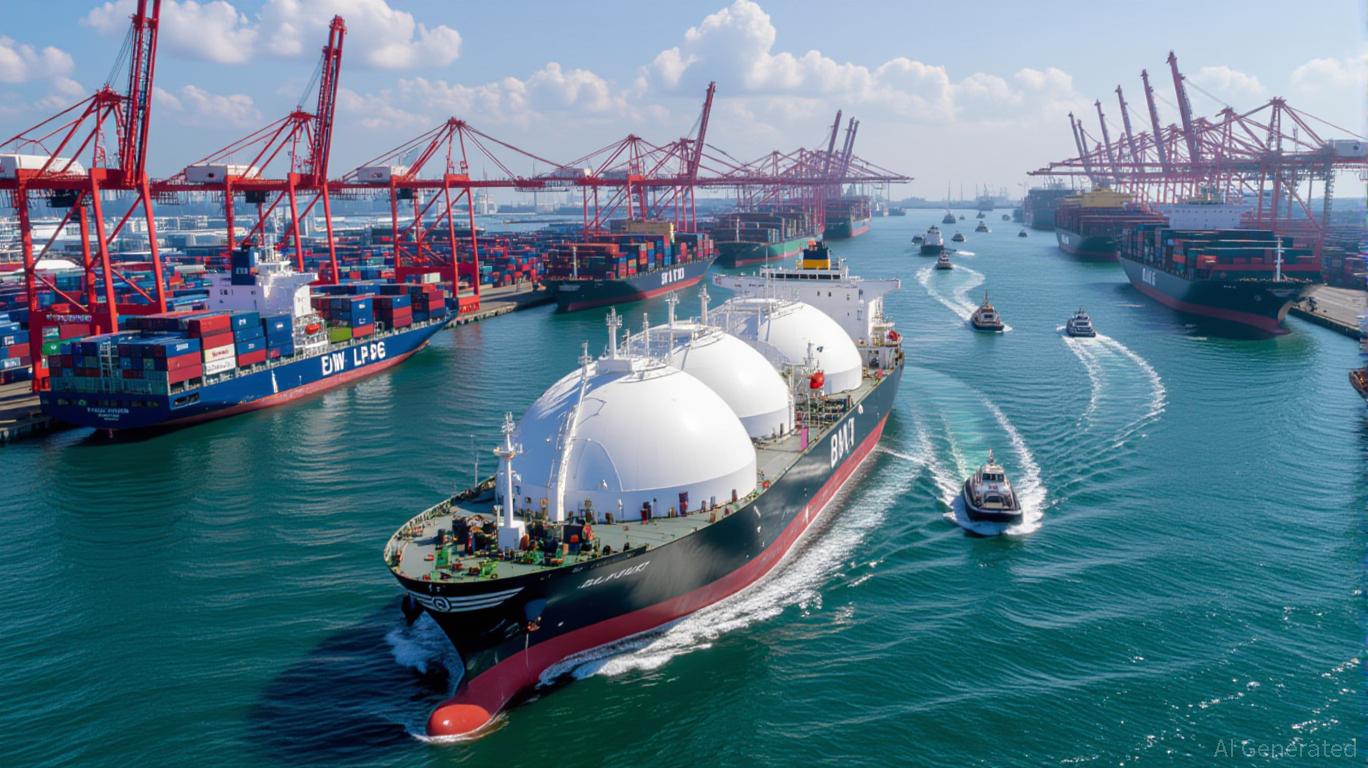
The recent announcement of BW LPG’s $0.22 per share dividend for Q2 2025 has sparked renewed debate about the company’s ability to balance aggressive shareholder returns with the inherent risks of a volatile liquefied natural gas (LNG) and liquefied petroleum gas (LPG) market. While the payout represents a 110% of the quarter’s Shipping Net Profit After Tax (NPAT), it underscores both the company’s confidence in its cash flow generation and the challenges posed by a sector marked by geopolitical tensions, shifting trade patterns, and cyclical demand fluctuations.
Financial Resilience Amid Elevated Leverage
BW LPG’s Q2 2025 results revealed a net leverage ratio of 30.7%, a slight increase from 31.2% in Q1 2025 but stable compared to the 32.7% peak in late 2024. This metric, while higher than the industry median, remains within manageable limits, supported by $708 million in liquidity and a strategic refinancing of debt obligations. The company’s Degree of Financial Leverage (DFL) of 1.46—ranked worse than 68.84% of its peers—highlights its heightened sensitivity to earnings volatility. However, BW LPG’s robust Time Charter Equivalent (TCE) performance, averaging $38,800 per available day in Q2, and 44% of its fleet under fixed-rate time charters, provides a critical buffer against market downturns.
Dividend Policy: Balancing Generosity and Sustainability
The $0.22 dividend, representing a 110% payout ratio of Q2 Shipping NPAT, reflects BW LPG’s commitment to maintaining a high yield for shareholders. This approach, however, raises questions about sustainability if earnings decline further. For context, the company’s payout ratio in Q4 2023 was 98%, and in Q1 2025, it was 75%. The recent spike to 110% suggests a reliance on retained earnings from prior periods, a strategy that could strain flexibility if cash flow weakens.
BW LPG’s dividend policy is structured to adjust payouts based on leverage thresholds and NPAT, a framework that has historically allowed it to navigate market cycles. For instance, in 2022, the company maintained a 16% yield despite lower earnings, while in 2023, it increased the yield to 23% amid stronger performance. The current 5% annualized yield, while attractive, must be weighed against the company’s exposure to a sector where spot rates can swing dramatically.
=”, “comp_with”: “0”, “effect”: “green”}, {“comp_relation”: ”
Market Volatility: A Double-Edged Sword
The LNG and LPG markets in 2025 have been shaped by a complex mix of supply constraints and demand surges. Asian markets, particularly China and India, have driven 60% of global LNG demand growth in H1 2024, redirecting trade flows and extending shipping routes. This has intensified pressure on freight rates, with spot charter rates surging in Q2 2024 due to tighter supply-demand fundamentals. BW LPG’s strategic focus on long-term time charters and forward freight agreements (FFAs) has mitigated some of this volatility, with 90% of its Q3 2025 fleet exposure fixed at $53,000 per day.
However, risks persist. Geopolitical tensions in the Red Sea and the Panama Canal’s constrained capacity have introduced uncertainty, while the U.S.-China trade war has disrupted short-term LPG shipping economics. BW LPG’s ability to adapt to these dynamics—such as securing new VLGCs and expanding its onshore infrastructure in India—demonstrates operational agility but also highlights the need for continued capital discipline.
Long-Term Outlook: Navigating Uncertainty
BW LPG’s long-term prospects hinge on its capacity to balance growth with prudence. The company’s fleet expansion, including 111 VLGCs on order and seven deliveries in 2025, positions it to capitalize on expected mid-to-high single-digit growth in U.S. LPG exports and Middle Eastern production. Additionally, its joint venture with Confidence Petroleum in India and investments in onshore terminals diversify revenue streams beyond shipping.
Yet, the elevated leverage ratio and reliance on high payout ratios necessitate caution. Investors should monitor BW LPG’s liquidity position, debt refinancing costs, and the pace of newbuilding deliveries. A key test will be whether the company can maintain its dividend policy if TCE rates decline due to oversupply or weaker demand.
Investment Implications
For income-focused investors, BW LPG’s 5% yield is compelling, particularly in a low-yield environment. However, the high payout ratio and sector volatility warrant a risk-adjusted approach. The company’s strong liquidity, strategic hedging, and diversified operations provide a foundation for sustainability, but earnings resilience will be critical.
Recommendation: Investors should consider BW LPG as a speculative hold. The dividend appears sustainable in the near term, but long-term confidence requires monitoring of cash flow stability and the company’s ability to navigate geopolitical and market headwinds. Diversification across the sector and a focus on companies with lower leverage may offer a more balanced approach for risk-averse portfolios.
In conclusion, BW LPG’s $0.22 dividend announcement reflects a company that is both ambitious and vulnerable. Its success in sustaining shareholder value will depend on its ability to navigate a volatile market while maintaining the financial flexibility to adapt to an evolving energy landscape.
